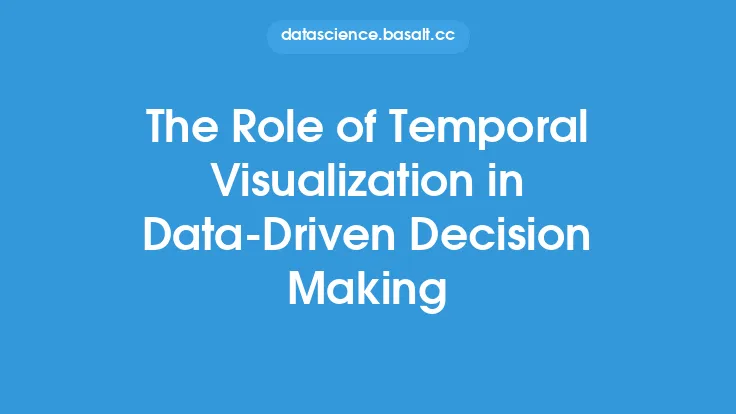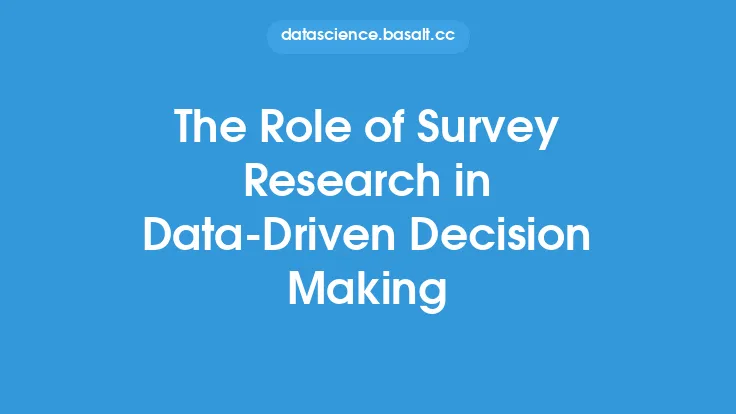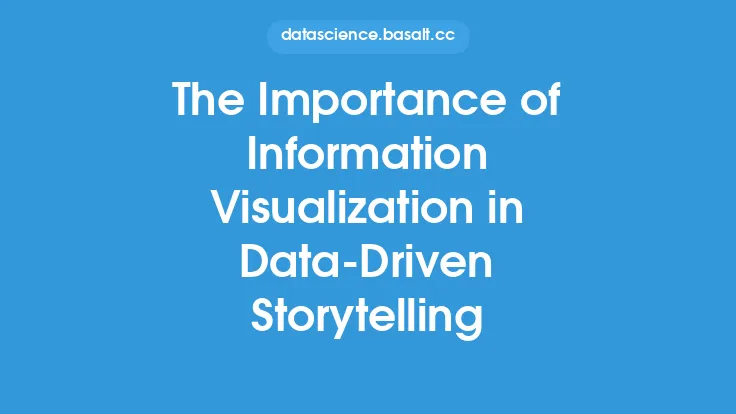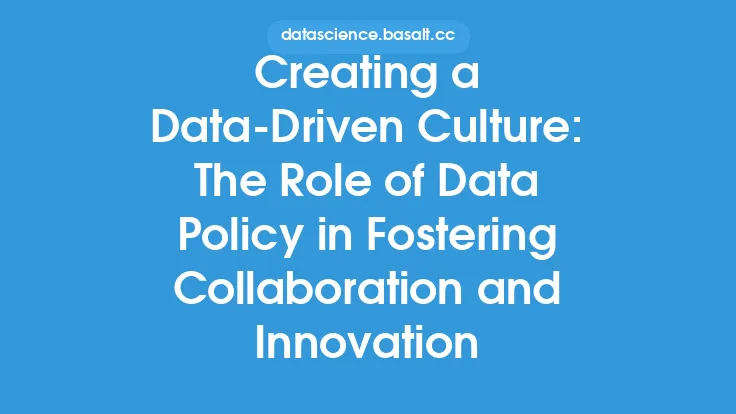In today's data-driven world, organizations are constantly seeking ways to make informed decisions based on the vast amounts of data they collect. Data visualization tools have become an essential component of this process, enabling businesses to extract insights from complex data sets and present them in a clear and concise manner. The role of data visualization tools in data-driven decision making is multifaceted, and their impact can be seen in various aspects of an organization's operations.
Introduction to Data Visualization Tools
Data visualization tools are software applications that use visual representations to communicate information and trends found in data. These tools provide a range of features, including data import and processing, visualization options, and interactive dashboards. They can handle large datasets, perform complex calculations, and create interactive and dynamic visualizations that can be shared with stakeholders. The primary goal of data visualization tools is to facilitate the exploration and understanding of data, making it easier to identify patterns, trends, and correlations that might be difficult to discern from raw data alone.
The Importance of Data Visualization in Decision Making
Data visualization plays a critical role in the decision-making process by providing stakeholders with a clear and concise understanding of the data. When data is presented in a visual format, it becomes easier to comprehend and analyze, allowing decision-makers to quickly identify key trends and patterns. This, in turn, enables them to make informed decisions based on data-driven insights, rather than relying on intuition or anecdotal evidence. Furthermore, data visualization helps to reduce the complexity of data, making it more accessible to non-technical stakeholders and facilitating collaboration across different departments and teams.
Key Features of Data Visualization Tools
Effective data visualization tools typically possess a range of key features that enable users to create interactive and dynamic visualizations. These features include data import and processing capabilities, a variety of visualization options (such as charts, tables, and maps), and interactive dashboards that allow users to filter, drill down, and explore the data in more detail. Additionally, many data visualization tools provide advanced analytics capabilities, such as predictive modeling and machine learning algorithms, which can be used to identify trends and patterns in the data. Other important features include collaboration and sharing capabilities, which enable users to share visualizations with stakeholders and facilitate communication and decision-making.
Technical Aspects of Data Visualization Tools
From a technical perspective, data visualization tools rely on a range of technologies and programming languages to create interactive and dynamic visualizations. These include data processing languages such as SQL and Python, as well as visualization libraries and frameworks such as D3.js and Matplotlib. Many data visualization tools also utilize web-based technologies such as HTML, CSS, and JavaScript to create interactive dashboards and visualizations. Furthermore, some tools may employ advanced technologies such as artificial intelligence and machine learning to provide predictive analytics and automated insights. Understanding the technical aspects of data visualization tools can help users to create more effective visualizations and to troubleshoot any issues that may arise.
Best Practices for Using Data Visualization Tools
To get the most out of data visualization tools, it's essential to follow best practices for data visualization and communication. This includes selecting the most appropriate visualization type for the data, using clear and concise labeling and annotations, and avoiding clutter and unnecessary complexity. Additionally, users should consider the audience and purpose of the visualization, tailoring the content and presentation to meet the needs of the stakeholders. Other best practices include using interactive and dynamic visualizations to facilitate exploration and analysis, providing context and background information to support the insights, and using storytelling techniques to communicate the key findings and recommendations.
The Future of Data Visualization Tools
The future of data visualization tools is likely to be shaped by advances in technologies such as artificial intelligence, machine learning, and the Internet of Things (IoT). As these technologies continue to evolve, we can expect to see more sophisticated and automated data visualization tools that can provide real-time insights and predictions. Additionally, the increasing use of cloud-based and mobile technologies will enable greater accessibility and collaboration, allowing stakeholders to access and interact with visualizations from anywhere and at any time. Furthermore, the growing importance of data-driven decision making will drive the development of more advanced and specialized data visualization tools, tailored to specific industries and use cases.
Conclusion
In conclusion, data visualization tools play a vital role in data-driven decision making, enabling organizations to extract insights from complex data sets and present them in a clear and concise manner. By understanding the key features, technical aspects, and best practices for using data visualization tools, users can create effective visualizations that facilitate communication and collaboration. As the field of data visualization continues to evolve, we can expect to see more advanced and sophisticated tools that provide real-time insights and predictions, driving business success and informing strategic decision making.





